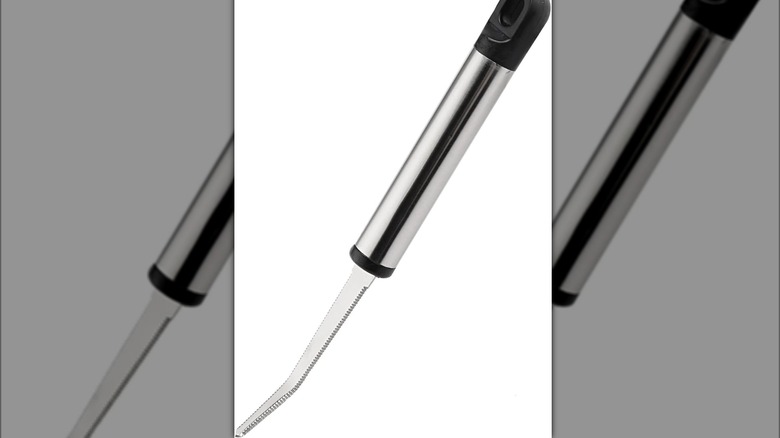How A Grapefruit Knife Allows You To Cut Perfect Sections Every Time
Grapefruit may be the most overlooked citrus, but it shouldn't be. Its pink fruit is delicious to nosh on for an early morning breakfast or an afternoon snack, but sectioning the fruit into bite-sized pieces can be a messy proposition. You may end up cutting away some of that precious endocarp as you attempt to remove the peel, or you might spill its sweet juice all over the place. Neither is a good look, but, luckily, there is a kitchen tool to help make sectioning your fruit a whole lot easier.
Enter the grapefruit knife. This cool-looking kitchen gadget will make the task of sectioning much easier. A grapefruit knife is about as big as a butter knife and has serrations on either side of its curved blade. The hooked design enables the user to easily move the blade along the curve of the peel, cutting the fruit away from the skin without disrupting the membrane. Besides it being easier to shovel this fruit into your mouth in pieces, why section a grapefruit rather than simply peeling it like an orange?
No more bitter
Grapefruit can be eaten after peeling like any other citrus. However, the thick, white membrane lining the peel is not necessarily the tastiest. In fact, the membrane is bitter, chewy, and unpleasant to the taste buds. When you section a grapefruit, you are removing this obstacle and can enjoy the sweet, juicy segments in a delicious salsa, salad, or roasted with chicken, unencumbered by the membrane.
You will still need a regular kitchen utility knife to cut your grapefruit in half, but once you've sliced through its circumference, you can use your grapefruit knife to separate the fruit from the membrane. The tip of the knife is curved, which allows it to get underneath each segment. Run the knife between each pie-piece segment after rounding the perimeter, then you can scoop out each section with the aid of the curved part of your grapefruit knife. It's that easy.

